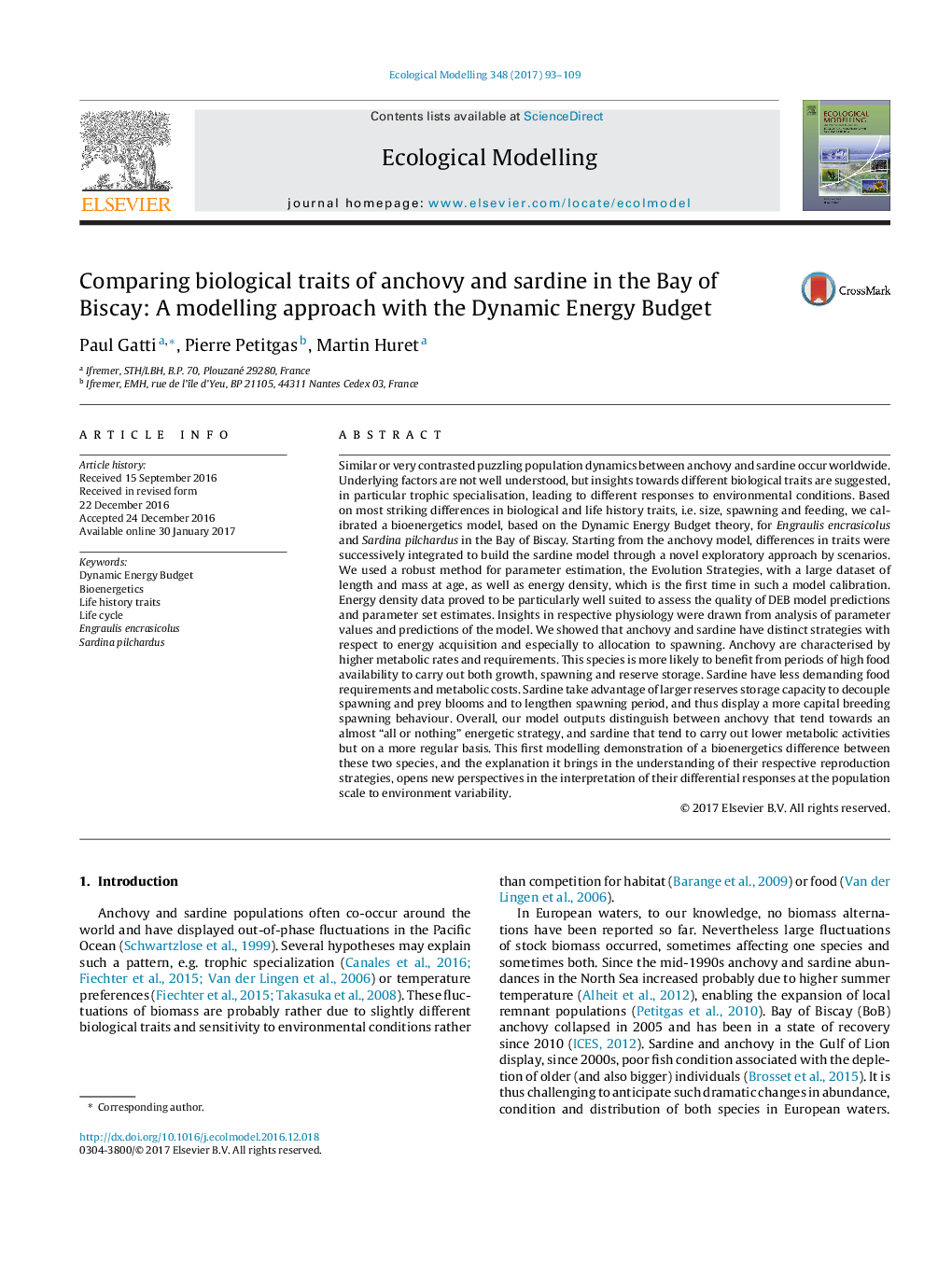| کد مقاله | کد نشریه | سال انتشار | مقاله انگلیسی | نسخه تمام متن |
|---|---|---|---|---|
| 5742321 | 1617399 | 2017 | 17 صفحه PDF | دانلود رایگان |
- A new calibration of a DEB model for anchovy and a first set of parameter estimates for sardine in the Bay of Biscay.
- Using a robust method for parameter estimation, the evolution strategy, guaranteeing the uniqueness of the solution.
- The sardine model is derived from the anchovy one through a scenario approach that successively tested the effect of distinctive traits (size, spawning, feeding).
- Bioenergetics and reproduction strategy strongly interact.
- Sardine displays a slower but more regular energy allocation to both growth and reproduction than anchovy.
Similar or very contrasted puzzling population dynamics between anchovy and sardine occur worldwide. Underlying factors are not well understood, but insights towards different biological traits are suggested, in particular trophic specialisation, leading to different responses to environmental conditions. Based on most striking differences in biological and life history traits, i.e. size, spawning and feeding, we calibrated a bioenergetics model, based on the Dynamic Energy Budget theory, for Engraulis encrasicolus and Sardina pilchardus in the Bay of Biscay. Starting from the anchovy model, differences in traits were successively integrated to build the sardine model through a novel exploratory approach by scenarios. We used a robust method for parameter estimation, the Evolution Strategies, with a large dataset of length and mass at age, as well as energy density, which is the first time in such a model calibration. Energy density data proved to be particularly well suited to assess the quality of DEB model predictions and parameter set estimates. Insights in respective physiology were drawn from analysis of parameter values and predictions of the model. We showed that anchovy and sardine have distinct strategies with respect to energy acquisition and especially to allocation to spawning. Anchovy are characterised by higher metabolic rates and requirements. This species is more likely to benefit from periods of high food availability to carry out both growth, spawning and reserve storage. Sardine have less demanding food requirements and metabolic costs. Sardine take advantage of larger reserves storage capacity to decouple spawning and prey blooms and to lengthen spawning period, and thus display a more capital breeding spawning behaviour. Overall, our model outputs distinguish between anchovy that tend towards an almost “all or nothing” energetic strategy, and sardine that tend to carry out lower metabolic activities but on a more regular basis. This first modelling demonstration of a bioenergetics difference between these two species, and the explanation it brings in the understanding of their respective reproduction strategies, opens new perspectives in the interpretation of their differential responses at the population scale to environment variability.
Journal: Ecological Modelling - Volume 348, 24 March 2017, Pages 93-109
